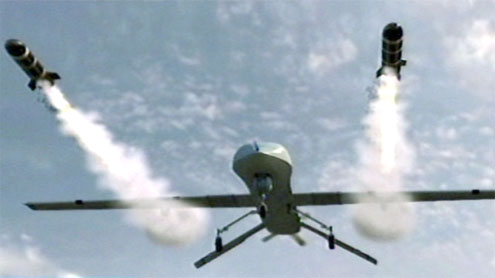How do drone strikes go wrong?
Two hostages, Warren Weinstein, an American, and Giovanni Lo Porto, an Italian, were killed in Pakistan.
Mr Obama says he takes “full responsibility” for their deaths.
The loss of these two men shines a spotlight on the efficiency of US operations. White House officials have provided few details about the raid, but few doubt that it was a drone strike.
Officials have said for years drone strikes are precise. But no matter how sophisticated the machines are, they’re still controlled by humans.
That’s usually where the problem lies.
Mistakes happen, says William Banks, a professor at Syracuse University’s Institute for National Security and Counterterrorism, largely for one reason: “People are involved.”
In most cases the people are good at their jobs. Over the years the drone programme has been extraordinarily effective in the fight against al-Qaeda. Dozens of al-Qaeda commanders have been “taken off the battlefield,” as Mr Obama puts it, through the strikes.
Mr Obama recognised the dangers of the programme and had a policy that stated no strikes would be carried out unless there was “near certainty” that civilians would not be killed.
The process for carrying out a drone strike is complex, though, and critics of the programme say it was only a matter of time until they backfired.
People in Pakistan – officials as well as individuals who are hired locally – help US analysts put together information about the hiding places of militants.
In addition, individuals who work on the drone programme, whether they are CIA analysts or done pilots, sift through intelligence from satellite imagery, audio recordings and other sources in order to distinguish “bad guys from good guys”, Mr Banks explains.
“Even if you’re up close and personal, it can be difficult,” he says, “much less if you’re at a distance, using technical means.”

